Today’s IoT sensor deployments remain limited in size as active sensor solutions are not cost-effective for widespread distribution. Additionally, many use cases are incompatible with the presence of a battery, either due to its limited lifetime or the inherent recycling and disposal limitations. Sensor-enabled passive RAIN RFID tags eliminate such barriers of adoption and sensor tags expand the capabilities of the connected devices, resulting in Augmented RAIN RFID to piggyback onto existing RAIN RFID deployments.
Benefits of Sensor-Enabled Augmented RAIN RFID Tags
Sensor-enabled augmented RAIN RFID tags have numerous advantages over other tracking and tagging implementation. For one, they support fully passive sensing, eliminating and providing an extended lifetime, and lower cost. Passive RAIN RFID sensors can be placed in immediate proximity to the point of interest, including to moving parts thanks to the absence battery or maintenance. Thanks to the backward compatibility with existing RAIN RFID deployments, Augmented RAIN RFID are easily deployed .
Automotive Industry Benefits
Automotive original equipment manufacturers (OEMs) have deployed end-to-end identification with RAIN RFID, enabling smoother supply-chain operations due to accurate traceability information, directly addressing a highly critical bottleneck. Augmented RAIN RFID sensors are used by a number of OEMs for water leakage detection in the car body, a problem growing in scale in modern connected cars and even more so in electric and hybrid vehicles. These vehicles require greater water leakage detection, a challenge that RAIN RFID sensors can reliably and effectively address at an affordable cost.
The typical usage of RAIN transponders is to accelerate logistics processes, however passive RAIN RFID sensors can also allow for temperature tracking on top of traceability. The option to monitor temperature of items across all points in the supply chain helps industries to better follow logistical processes and ensure increased safety in the supply chain for critical items. As alternatives to temperature monitoring, passive RAIN RFID sensors can detect pressure, moisture, and tampering if implemented.
Plug-and-Play Deployments with Standardized Transponders and Readers
A key component to any RAIN RFID system is the RAIN RFID reader. This device serves as a bridge between wireless RF which controls passive RAIN RFID transponders and IT infrastructure that transfers data to Enterprise Resource Planning (ERP) or warehouse management system (WMS). The RAIN RFID reader is more advantageous if readers offer a variety of interfaces, which include Ethernet, Bluetooth, Wi-Fi, or mobile communication.
An Augmented RFID transponder is energized by the reader, which enables simultaneous power and data transfer, and the RAIN RFID reader controls a corresponding RAIN RFID antenna. RAIN RFID readers supply sensors with an RF signal to energize the transponder and allow for wireless data transmission and reception. As Augmented RAIN RFID is based on global standards for RAIN RFID readers, these RAIN RFID readers can read additional data from different memory banks of the transponders and control data for transmission.
To learn more about augmented RAIN RFID passive sensors, read the latest whitepaper addressing how passive sensors augment RAIN RFID to enable advanced Internet of Things (IoT) applications, “Augmented RAIN RFID with Passive Sensors for Maintenance-Free and Ubiquitous Sensor Network Deployments“.
